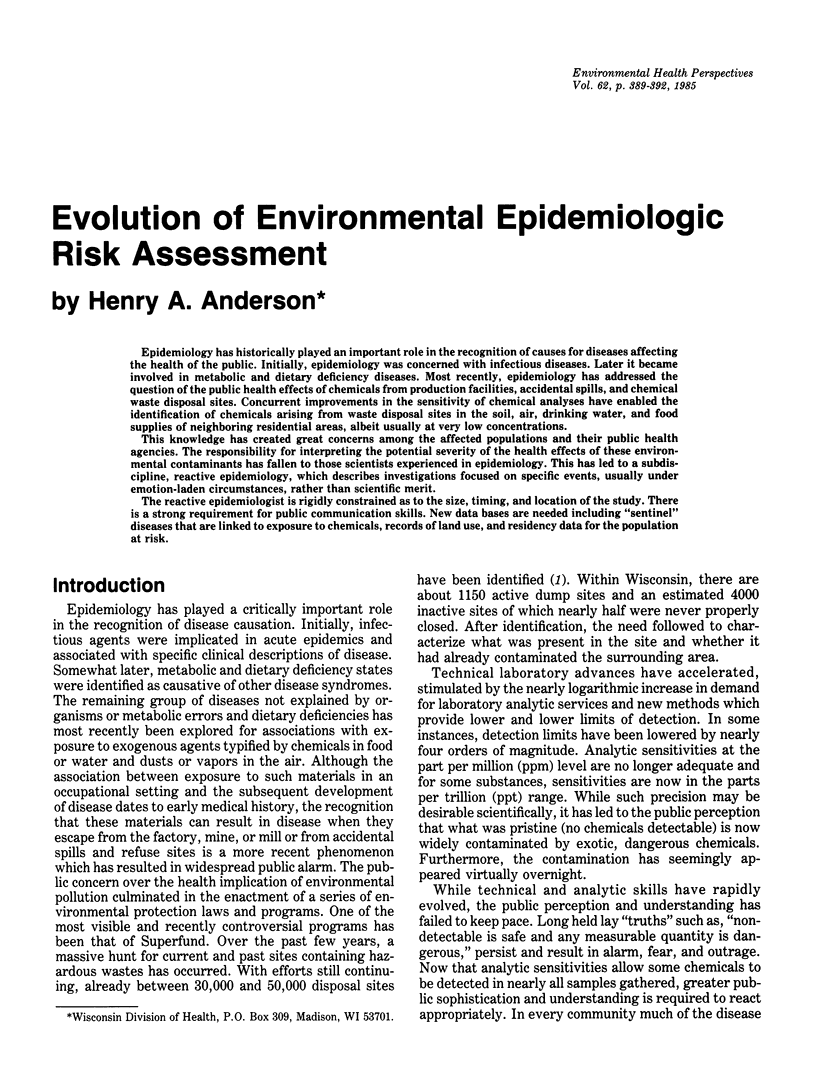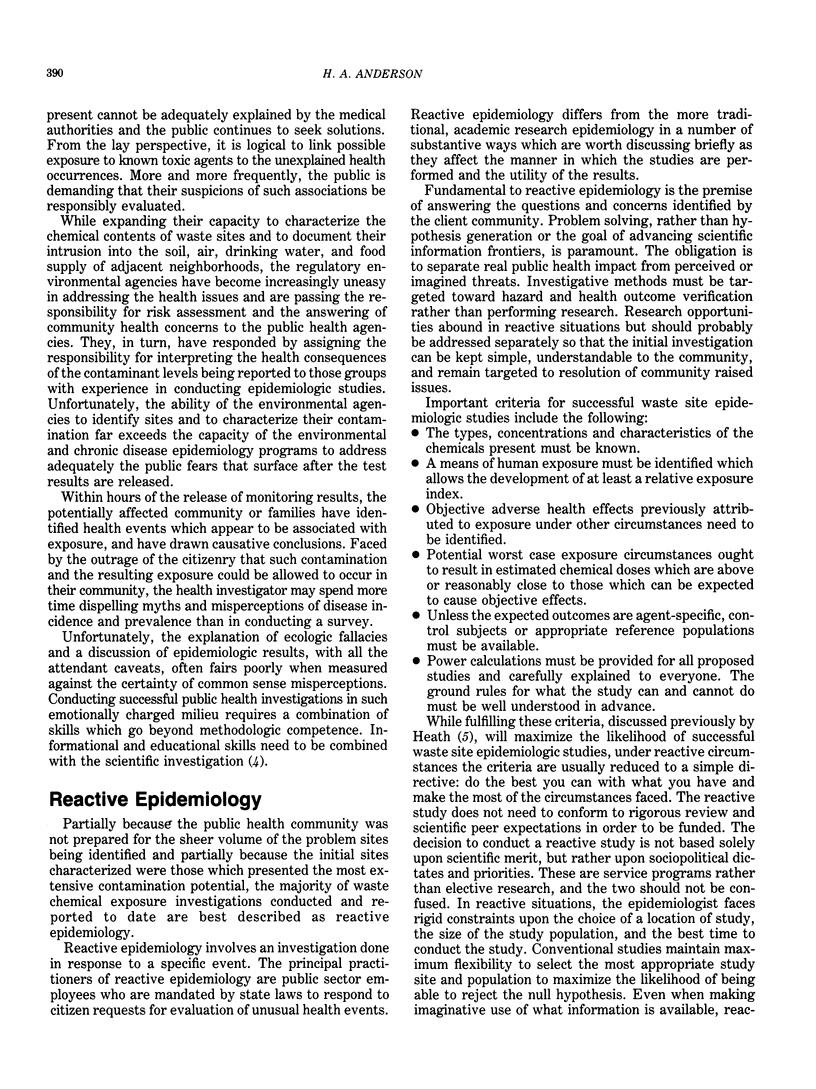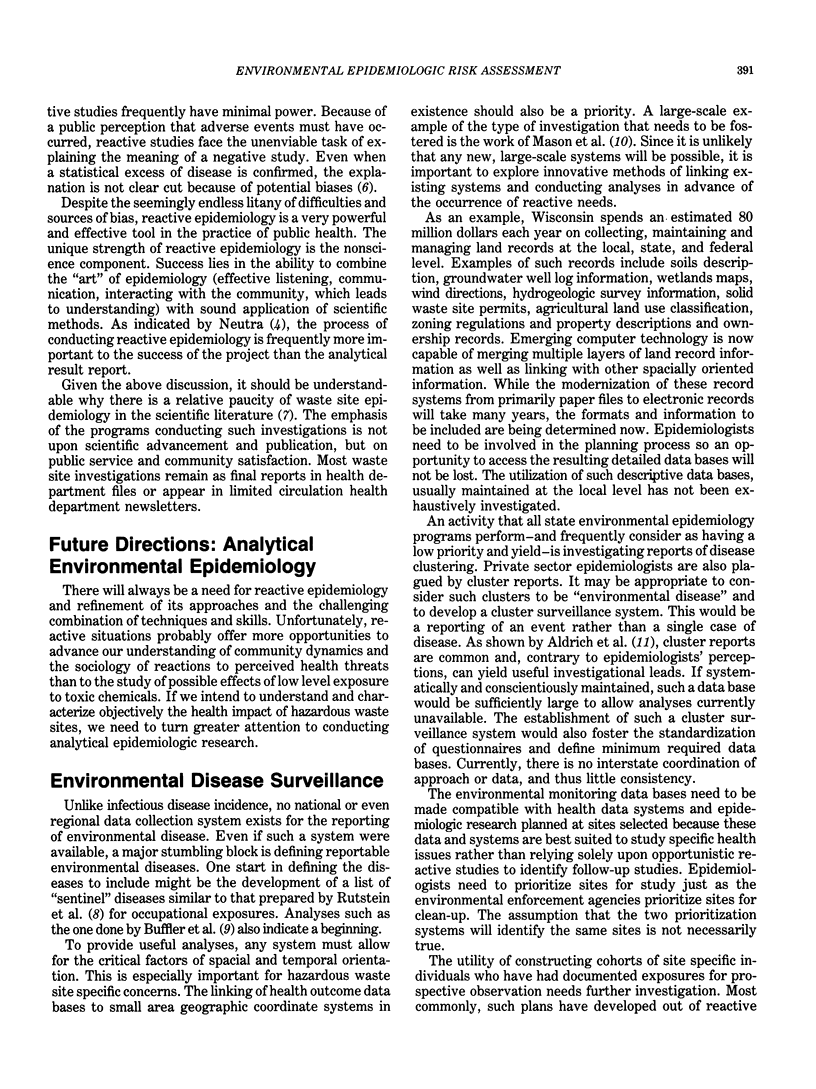Abstract
Epidemiology has historically played an important role in the recognition of causes for diseases affecting the health of the public. Initially, epidemiology was concerned with infectious diseases. Later it became involved in metabolic and dietary deficiency diseases. Most recently, epidemiology has addressed the question of the public health effects of chemicals from production facilities, accidental spills, and chemical waste disposal sites. Concurrent improvements in the sensitivity of chemical analyses have enabled the identification of chemicals arising from waste disposal sites in the soil, air, drinking water, and food supplies of neighboring residential areas, albeit usually at very low concentrations. This knowledge has created great concerns among the affected populations and their public health agencies. The responsibility for interpreting the potential severity of the health effects of these environmental contaminants has fallen to those scientists experienced in epidemiology. This has led to a subdiscipline, reactive epidemiology, which describes investigations focused on specific events, usually under emotion-laden circumstances, rather than scientific merit. The reactive epidemiologist is rigidly constrained as to the size, timing, and location of the study. There is a strong requirement for public communication skills. New data bases are needed including "sentinel" diseases that are linked to exposure to chemicals, records of land use, and residency data for the population at risk.
Full text
PDF



Selected References
These references are in PubMed. This may not be the complete list of references from this article.
- Aldrich T. E., Garcia N., Ziechner S., Berger S. Cancer clusters: a myth or a method. Med Hypotheses. 1983 Sep;12(1):41–52. doi: 10.1016/0306-9877(83)90031-2. [DOI] [PubMed] [Google Scholar]
- Buffler P. A., Crane M., Key M. M. Possibilities of detecting health effects by studies of populations exposed to chemicals from waste disposal sites. Environ Health Perspect. 1985 Oct;62:423–456. doi: 10.1289/ehp.8562423. [DOI] [PMC free article] [PubMed] [Google Scholar]
- Heath C. W., Jr Field epidemiologic studies of populations exposed to waste dumps. Environ Health Perspect. 1983 Feb;48:3–7. doi: 10.1289/ehp.83483. [DOI] [PMC free article] [PubMed] [Google Scholar]
- Landrigan P. J. Epidemiologic approaches to persons with exposures to waste chemicals. Environ Health Perspect. 1983 Feb;48:93–97. doi: 10.1289/ehp.834893. [DOI] [PMC free article] [PubMed] [Google Scholar]
- Lapham S. C., Castle S. P. Survey of health department-based environmental epidemiology programs. Am J Public Health. 1984 Sep;74(9):1023–1025. doi: 10.2105/ajph.74.9.1023. [DOI] [PMC free article] [PubMed] [Google Scholar]
- Levine R., Chitwood D. D. Public health investigations of hazardous organic chemical waste disposal in the United States. Environ Health Perspect. 1985 Oct;62:415–422. doi: 10.1289/ehp.8562415. [DOI] [PMC free article] [PubMed] [Google Scholar]
- Neutra R. R. Epidemiology for and with a distrustful community. Environ Health Perspect. 1985 Oct;62:393–397. doi: 10.1289/ehp.8562393. [DOI] [PMC free article] [PubMed] [Google Scholar]
- Novick L. F. The environment returns to the health department. Am J Public Health. 1984 Sep;74(9):963–964. doi: 10.2105/ajph.74.9.963. [DOI] [PMC free article] [PubMed] [Google Scholar]
- Rutstein D. D., Mullan R. J., Frazier T. M., Halperin W. E., Melius J. M., Sestito J. P. Sentinel Health Events (occupational): a basis for physician recognition and public health surveillance. Am J Public Health. 1983 Sep;73(9):1054–1062. doi: 10.2105/ajph.73.9.1054. [DOI] [PMC free article] [PubMed] [Google Scholar]
- Thomas D. C. The problem of multiple inference in identifying point-source environmental hazards. Environ Health Perspect. 1985 Oct;62:407–414. doi: 10.1289/ehp.8562407. [DOI] [PMC free article] [PubMed] [Google Scholar]


